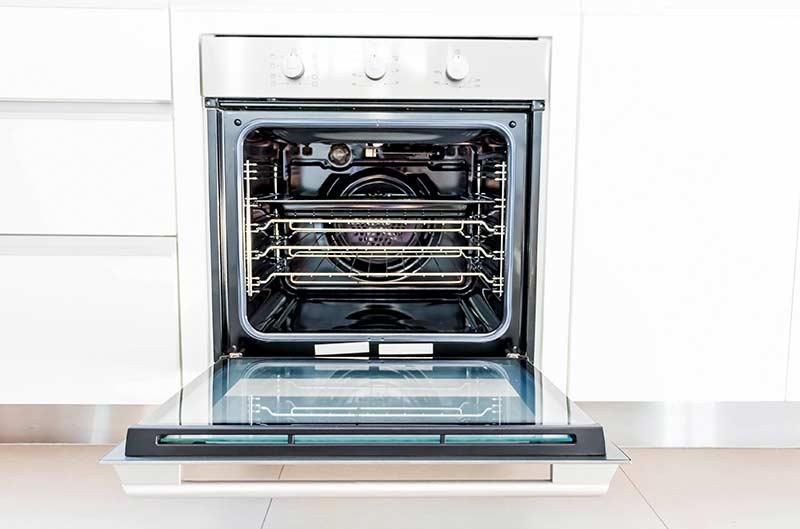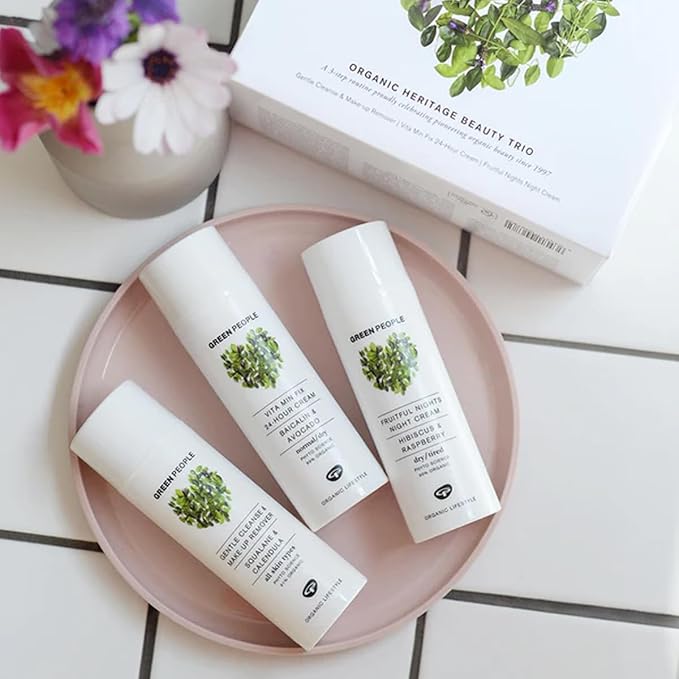Keeping your floors clean doesn’t have to come at the planet’s expense. With the right eco-friendly tools and techniques, you can maintain spotless floors across every surface-whether hardwood, laminate, carpet or tile-without exposing your home to harsh chemicals. From regular sweeping and vacuuming to natural DIY cleaners using ingredients like vinegar, tea tree oil and baking soda, this guide shares sustainable tips to protect your family’s health and indoor air quality. Learn how to deep clean mindfully, treat each flooring type safely, and adopt a consistent, low-tox routine that saves both time and the environment in the long run.
Share your articles with us and get published! Reach out at hello@friendlyturtle.com.
The 3 Most Effective & Eco-Friendly Ways to Clean Your Oven

3 Eco Friendly Ways To Clean Your Oven At Home
Eco Friendly Oven Cleaning With Baking Soda
Baking soda (also known as sodium bicarbonate) is one of the most famous and effective eco kitchen cleaning hacks. It does not only help neutralise foul odours, but it can be used to clean ovens, microwaves, and tile grout.Cleaning your oven overnight with baking soda and white vinegar
This is one of the most powerful combinations when it comes to how to keep your oven clean.- Use a little bit of water and mix it with the baking soda to create a paste.
- Rub the paste on the inside of your oven. Don’t forget the racks and the glass door too.
- Ensure everything is coated really good, then let it sit overnight.
- You will notice the baking soda mixture is completely dry the next day.
- Fill an empty spray bottle with undiluted white vinegar and spray the inside of your oven. You will hear a lot of fizzing.
- Make sure everything is sprayed really good, and then close the oven door and let this work its magic for 1-2 hours.
- Once done, take a rag or a sponge and scrub in circular motions. You will notice all the grease is coming off really easy.
- Rinse off the rag, and make sure all traces of the baking soda mixture are gone.
- If it’s been far too long since you last cleaned your oven, you may have to repeat the procedure
Cleaning your oven with lemon
Lemons are another great solution for eco-friendly oven cleaning. That’s because citric acid has powerful anti-bacterial, antiseptic, and degreasing effects and can help break even the toughest of baked-on grease and gunk.- First, juice two lemons, add some water, and put the mixture on the stove to boil.
- When the mixture boils, add a tablespoon of your regular dishwashing soap.
- Once the mixture stirs, remove it from the stove, and leave it to cool off before transferring it into an empty spray bottle.
- You can now spray the mixture directly onto dirty areas and then use a scourer and a sponge to clean off.
Steam cleaning with lemon
When it’s been too long since you last cleaned your oven, there will likely be a lot of greases and caked-on stuff on the inside. That’s when it’s best first to steam clean your oven with lemon, so all that burnt-on gunk can be loosened and cleaned more easily.- First, fill a glass bowl with boiling water.
- Juice two lemons and add them to the bowl as well.
- Place the mixture into the oven and allow for the lemon-infused steam to melt and loosen all the built-up grease and fat.
- After an hour, you will find you will have a much easier time cleaning the inside of your oven.
Lemon rub cleaning
When you’re in a hurry, you can use this method as another means of loosening the built-up grime, making this another effective, eco friendly oven cleaning hack.- Cut 3-4 lemons in halves.
- After you steam clean your oven, you can use the halves to give its inside surface additional citric acid and leave it on for a while for an even greater effect.
- You will then be able to clean even the toughest caked-on spots and have the easiest time cleaning your oven.
Cleaning your oven with DIY sugar soap
Sugar soap is another effective and sustainable way to clean your oven to keep them spotless. It is specially designed to clean grease and stubborn dirt. The thing about it, however, is that you have to make it yourself, as the commercial version of it contains compounds that are not eco-friendly.● 1.5 tbs of Imperial Sugar Light Brown Sugar
● 2 teaspoons of some essential oil (lavender, peppermint, vanilla, etc.)
● 1 teaspoon of vitamin E oil
● 2 cups of opaque glycerin melt-and-pour soap
- Cut and melt the soap into cubes
- Place the pieces into a double boiler and cover it with the lid.
- When it melts, take it off the stove and mix in the brown sugar and vitamin E oil.
- Pour everything into a glass measuring cup and add the essential oil.
- Pour in soap, filling the top of the mould. If bubbles appear, spritz gently with alcohol to remove them.
- Leave it to sit for around 4 hours.
- After you’re done, you have your own DIY sugar soap, with which you can proceed to clean your oven.
How Often Should You Clean Your Oven?
Ovens should be cleaned every two-three months, at least twice a year. Failing to do so can result in poor performance, burnt-out electronic components, increased electricity bills, and costly repairs.Why Is Regular Cleaning Important?
Regular maintenance is important to keep any appliance functioning properly and to extend its lifetime.How Not To Clean Your Oven
Some ovens have a self-cleaning feature, which, at first glance, sounds convenient.Deep Cleaning Your Ovening
An oven should be deep cleaned at least twice every year. The benefits are that it will increase its lifespan, reduce your electricity bills, and improve the taste of your food.Conclusion
One of the keys to living more sustainably is to have a clean and properly working oven. The 3 most effective and eco friendly oven cleaning ways we’ve reviewed above will ensure just that.0 comments
Let customers speak for us
Blog posts
Not all log cabins are built the same-even if they look similar at first glance. If you’re investing in an eco-friendly garden cabin, quality matters. Start by checking the timber-slow-grown softwoods like Nordic spruce are dense, durable, and less prone to warping. Make sure the logs are kiln-dried and pressure-treated to resist damp and pests. Look for solid interlocking log systems and sufficient wall thickness, ideally 44mm or more for year-round use. Roofing should go beyond basic felt-choose bitumen shingles or EPDM for weather resilience. Insulation is key too; even if you’re not heating it now, a cabin designed with future upgrades in mind will save energy and money later. A thoughtfully chosen cabin offers a sustainable space for work or relaxation.
As global temperatures rise, cooling our homes sustainably has never been more essential. Passive cooling strategies-like sealing air leaks, using thermal curtains, and improving cross-ventilation-help reduce energy use while maintaining comfort. Outdoor elements such as tree shading, water features, and permeable landscaping materials lower surrounding temperatures naturally. Smart home tech, including automated blinds and ventilation systems, supports these efforts efficiently. Even small steps, like switching to natural materials or adjusting window placement, can make a big difference. With thoughtful design and eco-conscious upgrades, we can stay cool without relying on energy-intensive air conditioning, helping both our wallets and the planet.





